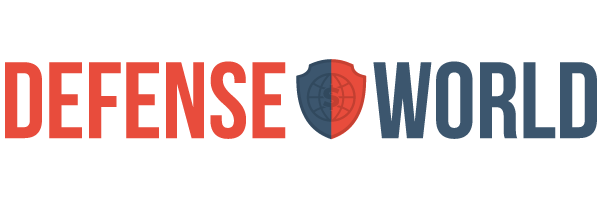Corning (NYSE:GLW – Get Free Report) is one of 28 publicly-traded companies in the “Communications Components” industry, but how does it compare to its peers? We will compare Corning to related companies based on the strength of its earnings, risk, profitability, institutional ownership, dividends, valuation and analyst recommendations.
Analyst Recommendations
This is a breakdown of recent ratings and price targets for Corning and its peers, as provided by MarketBeat.com.
| Sell Ratings | Hold Ratings | Buy Ratings | Strong Buy Ratings | Rating Score | |
| Corning | 0 | 3 | 9 | 1 | 2.85 |
| Corning Competitors | 279 | 1072 | 1958 | 99 | 2.55 |
Corning presently has a consensus target price of $53.75, suggesting a potential upside of 3.87%. As a group, “Communications Components” companies have a potential upside of 7.56%. Given Corning’s peers higher probable upside, analysts plainly believe Corning has less favorable growth aspects than its peers.
Institutional and Insider Ownership
Dividends
Corning pays an annual dividend of $1.12 per share and has a dividend yield of 2.2%. Corning pays out 215.4% of its earnings in the form of a dividend, suggesting it may not have sufficient earnings to cover its dividend payment in the future. As a group, “Communications Components” companies pay a dividend yield of 2.4% and pay out 137.0% of their earnings in the form of a dividend. Corning lags its peers as a dividend stock, given its lower dividend yield and higher payout ratio.
Earnings & Valuation
This table compares Corning and its peers gross revenue, earnings per share and valuation.
| Gross Revenue | Net Income | Price/Earnings Ratio | |
| Corning | $13.12 billion | $506.00 million | 99.51 |
| Corning Competitors | $1.63 billion | -$16.41 million | 42.61 |
Corning has higher revenue and earnings than its peers. Corning is trading at a higher price-to-earnings ratio than its peers, indicating that it is currently more expensive than other companies in its industry.
Profitability
This table compares Corning and its peers’ net margins, return on equity and return on assets.
| Net Margins | Return on Equity | Return on Assets | |
| Corning | 3.34% | 16.47% | 6.64% |
| Corning Competitors | -20.22% | -15.24% | -6.38% |
Volatility & Risk
Corning has a beta of 1.11, meaning that its share price is 11% more volatile than the S&P 500. Comparatively, Corning’s peers have a beta of 0.80, meaning that their average share price is 20% less volatile than the S&P 500.
Summary
Corning beats its peers on 11 of the 15 factors compared.
About Corning
 Corning Incorporated engages in the display technologies, optical communications, environmental technologies, specialty materials, and life sciences businesses in the United States and internationally. The company's Display Technologies segment offers glass substrates for flat panel displays, including liquid crystal displays and organic light-emitting diodes that are used in televisions, notebook computers, desktop monitors, tablets, and handheld devices. Its Optical Communications segment provides optical fibers and cables; and hardware and equipment products, such as cable assemblies, fiber optic hardware and connectors, optical components and couplers, closures, network interface devices, and other accessories for the telecommunications industry, businesses, governments, and individuals. The company's Specialty Materials segment manufactures products that offer material formulations for glass, glass ceramics, crystals, precision metrology instruments, and software, as well as glass wafers and substrates, tinted sunglasses, and radiation shielding products for various markets comprising mobile consumer electronics, semiconductor equipment optics and consumables, aerospace and defense optics, radiation shielding products, sunglasses, and telecommunications components. Its Environmental Technologies segment provides ceramic substrates and filter products for emissions control in mobile, gasoline, and diesel applications. The company's Life Sciences segment offers laboratory products, including consumables, such as plastic vessels, liquid handling plastics, specialty surfaces, cell culture media, and serum, as well as general labware, and glassware and equipment under the Corning, Pyrex, Falcon, and Axygen brands. The company was formerly known as Corning Glass Works and changed its name to Corning Incorporated in April 1989. Corning Incorporated was founded in 1851 and is headquartered in Corning, New York.
Corning Incorporated engages in the display technologies, optical communications, environmental technologies, specialty materials, and life sciences businesses in the United States and internationally. The company's Display Technologies segment offers glass substrates for flat panel displays, including liquid crystal displays and organic light-emitting diodes that are used in televisions, notebook computers, desktop monitors, tablets, and handheld devices. Its Optical Communications segment provides optical fibers and cables; and hardware and equipment products, such as cable assemblies, fiber optic hardware and connectors, optical components and couplers, closures, network interface devices, and other accessories for the telecommunications industry, businesses, governments, and individuals. The company's Specialty Materials segment manufactures products that offer material formulations for glass, glass ceramics, crystals, precision metrology instruments, and software, as well as glass wafers and substrates, tinted sunglasses, and radiation shielding products for various markets comprising mobile consumer electronics, semiconductor equipment optics and consumables, aerospace and defense optics, radiation shielding products, sunglasses, and telecommunications components. Its Environmental Technologies segment provides ceramic substrates and filter products for emissions control in mobile, gasoline, and diesel applications. The company's Life Sciences segment offers laboratory products, including consumables, such as plastic vessels, liquid handling plastics, specialty surfaces, cell culture media, and serum, as well as general labware, and glassware and equipment under the Corning, Pyrex, Falcon, and Axygen brands. The company was formerly known as Corning Glass Works and changed its name to Corning Incorporated in April 1989. Corning Incorporated was founded in 1851 and is headquartered in Corning, New York.
Receive News & Ratings for Corning Daily - Enter your email address below to receive a concise daily summary of the latest news and analysts' ratings for Corning and related companies with MarketBeat.com's FREE daily email newsletter.
